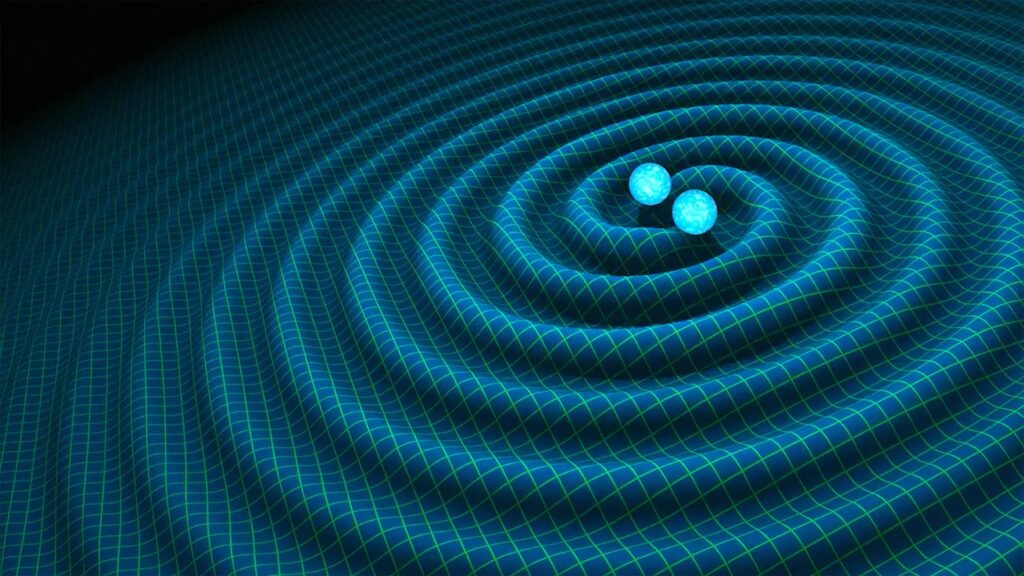
September 2025 marks a significant milestone in astrophysics: the tenth anniversary of the first direct detection of gravitational waves. These ripples in the fabric of space-time, predicted by Albert Einstein’s theory of General Relativity in 1916, were first observed by the Laser Interferometer Gravitational-Wave Observatory (LIGO). Traveling at the speed of light, approximately 186,000 miles per second, these waves alter the distances between objects as they pass, stretching and squeezing space itself.
The announcement comes as the astronomical community reflects on a decade of groundbreaking discoveries, beginning with the detection of gravitational waves from the merger of two black holes. This event confirmed Einstein’s century-old prediction and opened a new window into the universe.
Waves in Space
Gravitational waves are generated by the acceleration of massive objects in space, particularly during cataclysmic events. LIGO’s first detection involved two black holes spiraling into one another before merging, sending ripples across the cosmos. However, black holes are not the sole sources of these waves. Supernovae and neutron stars can also create gravitational waves under certain conditions. While invisible to the human eye, animations from NASA’s Science Visualization Studio vividly illustrate the merger of black holes and the waves they produce.
How It Works
The mechanics of a gravitational wave observatory like LIGO are both intricate and fascinating. The facility features two tunnels, each about 2.5 miles long, arranged in an “L” shape. At the end of each tunnel, a 40 kg mirror reflects a laser beam sent from the observatory. This beam is split into two, with each part traveling down a tunnel and bouncing back from the mirrors. Upon recombination, if the arm lengths are unchanged, the light waves cancel each other, resulting in darkness at the detector. However, a passing gravitational wave alters the arm lengths slightly, causing a flicker of light that signals the wave’s presence.
The detection occurs at the recombination point, where even a minuscule change in arm length affects the laser beams’ return time, producing a measurable shift in the interference pattern. To confirm a gravitational wave, both LIGO observatories—one in Washington State and the other in Louisiana—must record the same pattern almost simultaneously. This dual confirmation ensures the signal is genuine and not local interference.
Get Involved
The past decade has seen over 300 black hole mergers detected with the help of additional observatories like VIRGO and KAGRA. While some of these detections are confirmed, others await further analysis. The public can contribute to this exciting field through projects like Black Hole Hunters and Gravity Spy.
- Black Hole Hunters: This project involves analyzing data from the TESS satellite to study star brightness changes over time. Participants look for gravitational microlensing effects, which indicate a massive object, such as a black hole, passing in front of a star.
- Gravity Spy: Volunteers assist LIGO scientists by identifying glitches that mimic gravitational waves, helping to refine algorithms for detecting genuine signals.
For those interested in a hands-on approach, JPL’s “Dropping In With Gravitational Waves” activity uses simple materials like gelatin, magnetic marbles, and a small mirror to demonstrate how gravitational waves move through space-time.
Implications and Future Prospects
The detection of gravitational waves has profound implications for our understanding of the universe. It has not only confirmed a key aspect of Einstein’s theory but also provided insights into the behavior of black holes, neutron stars, and other cosmic phenomena. As technology advances, the sensitivity of observatories like LIGO will improve, potentially leading to even more discoveries.
Meanwhile, the collaborative efforts between global observatories and citizen scientists continue to expand the frontiers of astrophysics. As we celebrate this decade of achievements, the future of gravitational wave astronomy looks promising, with the potential to unravel more mysteries of the universe.
As we look ahead, the next steps involve enhancing detection capabilities and exploring new methods to observe these cosmic ripples. The journey of discovery is far from over, and the scientific community remains eager to see what the next decade will bring.






